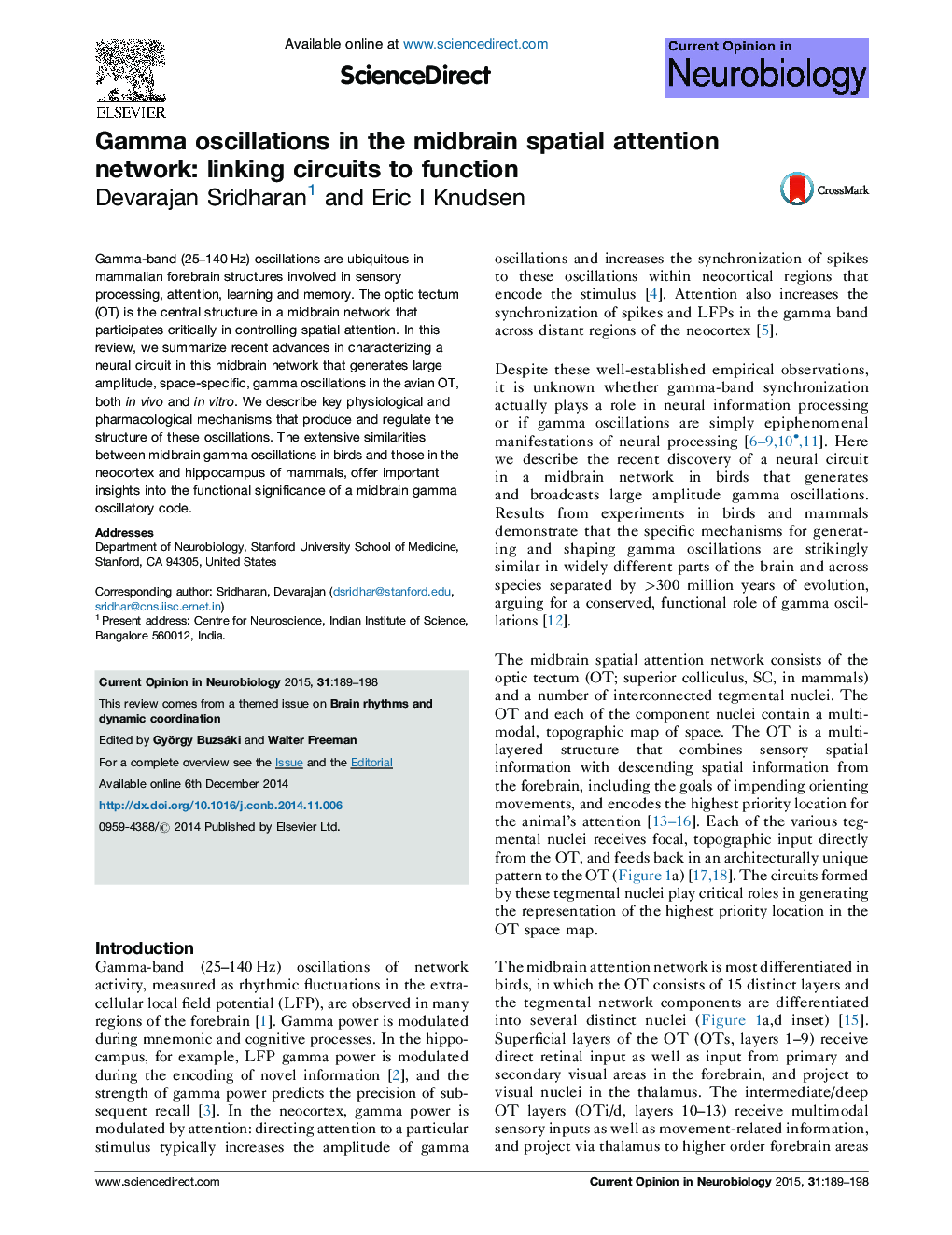| Article ID | Journal | Published Year | Pages | File Type |
|---|---|---|---|---|
| 6266239 | Current Opinion in Neurobiology | 2015 | 10 Pages |
â¢Salient sensory stimuli induce robust gamma oscillations in the avian OT.â¢In vivo-like oscillations are produced by electrical stimulation in midbrain slices.â¢GABA, ACh, and NMDA modulate different aspects of oscillation structure.â¢Gamma mechanisms are similar in the avian midbrain and mammalian forebrain.â¢A midbrain oscillatory code could route signals to and within forebrain networks.
Gamma-band (25-140Â Hz) oscillations are ubiquitous in mammalian forebrain structures involved in sensory processing, attention, learning and memory. The optic tectum (OT) is the central structure in a midbrain network that participates critically in controlling spatial attention. In this review, we summarize recent advances in characterizing a neural circuit in this midbrain network that generates large amplitude, space-specific, gamma oscillations in the avian OT, both in vivo and in vitro. We describe key physiological and pharmacological mechanisms that produce and regulate the structure of these oscillations. The extensive similarities between midbrain gamma oscillations in birds and those in the neocortex and hippocampus of mammals, offer important insights into the functional significance of a midbrain gamma oscillatory code.
